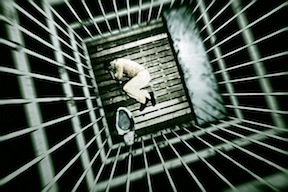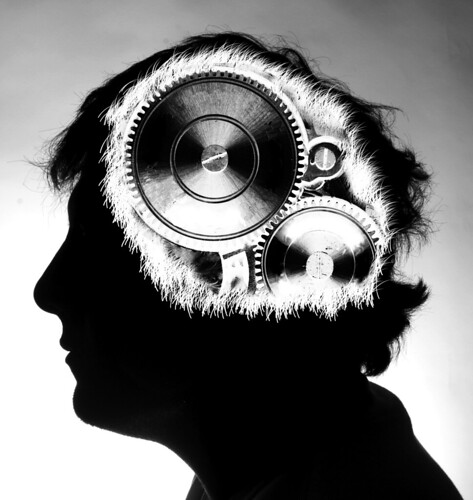April 2013 Archives

The 3-5 percent of kids who are particularly gifted are also at special risk for being tagged with an inappropriate diagnosis of mental disorder.
Marianne Kuzujanakis, MD, MPH is the perfect person to explain why. She is a pediatrician and a Director of SENG (Supporting Emotional Needs of the Gifted) -- an organization dedicated to helping the gifted and their parents. She is also a co-founder of the SENG Misdiagnosis Initiative.
Dr. Kuzujanakis writes:
The 2010 American Academy of Pediatrics Task Force on Mental Health reported that 37% of children and adolescents either meet the DSM criteria for a mental health diagnosis or show some impairment in functioning. Diagnoses of ADHD and autism continue to rise.
Pediatric primary care physicians do much of the psychiatric diagnosis and prescribe most of the psychotropic medicine -- but a recent survey showed that only 10% felt adequately prepared by their training to do so. They see kids for very brief visits and many are too influenced by drug marketing (as are parents and teachers). Over-diagnosis and over-treatment are commonplace.
Highly gifted children are a particular diagnostic challenge with errors that can occur both ways. When pediatric diagnoses are carelessly applied, gifted children are frequently mislabeled with ADHD, autistic, depressive, or bipolar disorders. Yet sometimes being gifted effectively hides these same conditions.
So, while some gifted kids are erroneously labeled and medicated for mental health disorders they do not have, others are unrecognized for learning or mental disorders they do have.
And many gifted children are never identified as gifted. Wasting much of their day in unsuitable classrooms, they may behave in unacceptable ways. Despite giftedness being akin to a special need, funding for it is scarce and the needs of gifted minority and poor children are shamefully overlooked. Very few articles are found in the pediatric medical literature about giftedness.
Teachers and physicians also receive minimal instruction on the identification and management of gifted children and the fact that they seem to be wired differently and have developmental trajectories that differ from the norm. Many gifted kids experience the world with heightened and vivid intensities and sensitivities that may be a big plus (allowing them to become creative artists, scientists, inventors, and humanitarians) but also can be a big minus (subjecting them to sometimes overwhelming emotions and worrisome and unacceptable behaviors.)
Normal giftedness can easily be confused with DSM mental disorder. Gifted kids may talk a lot, have high levels of energy, and be impulsive or inattentive or distractible in some settings -- similar to symptoms of ADHD. It's not unusual for gifted kids to struggle socially, have meltdowns over minor issues, or have unusual all-consuming interests -- all pointing to an inappropriate diagnosis of autism. Often perfectionistic, the gifted are more likely to be introverted and may feel alone and alien in a world that doesn't fully understand them.
Giftedness is not always seen as a socially positive and valued trait. Many gifted kids are bullied, others underachieve to hide their abilities, and some experience anxiety and depression with increased risk for self-harm. As many as 20% may drop out of school.
Here is some advice to parents, teachers, and medical professionals:
- Throw away pre-conceptions of what giftedness should look like or where giftedness is found. Giftedness is not always equivalent to high academic achievement, and isn't limited to race, ethnicity, gender, or affluence. Gifted kids do sometimes have learning or mental health disorders.
- Throw away the idea that normal must be defined by a narrow set of criteria. Not everyone processes information and sensory inputs in the same way, nor does everyone develop along the same expected timeline. Variability does not automatically indicate a disorder. Be insistent that both weaknesses and strengths are equally acknowledged and supported.
- It is important to determine who is suffering with an observed behavioral issue -- the child or those around him/her. Labels, treatments, and medications are meant to alleviate suffering in the recipients, not as a means to make those around them happy.
- It's OK to not have all the answers. Take the initiative to find out more about giftedness and gifted misdiagnosis. Here [ http://www.sengifted.org/resources/resource-library/recommended-reading ] are some valuable resources.
- Seek out organizations like SENG, National Association for Gifted Children (NAGC), Davidson Institute, CEC-TAG, Uniquely Gifted, World Council on Gifted, Hoagies Gifted, and your state gifted associations for opportunities to learn more.
Thanks so much, Dr. Kuzujanakis. One of the disasters of the diagnostic inflation is that expectable and desirable individual difference is so often mislabeled as mental disorder.
Caution is particularly necessary in diagnosing kids. They are so developmentally labile and have such a short track record that diagnostic mistakes are frequently made and once made are extremely difficult to undo.
 The public revulsion over repeated mass shootings has placed mental health in the spotlight. This is both good and bad. The public revulsion over repeated mass shootings has placed mental health in the spotlight. This is both good and bad.
Bad because focusing on the mentality of the shooter diverts attention away from the lethality of the weapon -- and from the fact thatmany mass shooters had no history of mental health involvement. We will never be able to predict who will commit random acts of violence, but we can reduce our ridiculously high rates of gun death by having a sane gun control policy.
Good because our current (non)system of mental health care is badly broken and cries out for fixing and better funding. The problems are spelled out by Amanda Pustilnik, associate professor of law at University of Maryland and an expert on the relationship of law, neuroscience, and mental health policy.
She writes:
Today, our largest mental hospitals are our jails. The jail at New York's Rikers' Island functions as the nation's largest psychiatric facility. Los Angeles' jails -- not its hospitals -- are California's largest providers of mental health care. State prisons alone spend nearly $5 billion annually to incarcerate mentally ill inmates who are not violent.
According to the Department of Justice, nearly 1.3 million people with mental illness are incarcerated in state and federal jails and prisons -- compared to only about 70,000 people being served in psychiatric hospitals.
The current psychiatric hospital inpatient population is only 5% of what it was at its height. We have about the same number of psychiatric hospital beds now as we did in 1850. Some of this 'deinstitutionalization' comes from the availability of medication and improved outpatient treatment, but most of the change is no more than a switch of institutions from hospital to prison.
Every year, tens of thousands of people try in vain to get access to mental health treatment. It can take months just to get an outpatient appointment and people desperately in need are routinely turned away at the hospital door because there is so little funding for psychiatric beds.
Where has the money for treatment gone? Much of it has been funneled directly into, and wasted on, our prison system. Prisons and jails have taken on behemoth proportions, bloated with nonviolent and even non-offending people who in earlier times would have been treated in hospitals -- we are the poorer for it and no safer.
The mentally [ill] are far more likely to be the victim of a crime or to harm themselves. Their over-representation in the criminal system results from their poor ability to communicate with police, lack of adequate legal representation, self-medication with drugs and alcohol, enacting symptoms in public, and lack of any other place to put them. As a Florida judge pointed out -- jails are the one institution that can't say no to admitting someone -- so the mentally ill are dumped there, often without treatment, and then have a criminal record to boot.
And some mentally ill people spend time in jails without having committed any offense at all. Several states authorize the police to arrest mentally ill people who have not broken any law, simply to promote public order. More commonly, hospitals transfer patients to jails to handle overflow. Even children may be confined in criminal detention centers because there are so few treatment facilities for severely mentally ill children. This reliance on the criminal justice system as a surrogate mental health system wastes life and treasure and conflicts with basic notions of justice.
So, why are we so irrational in our misallocation of resources? Why don't we invest instead in proven alternatives to prison, like assertive community-based treatment programs and access to supportive housing?
The problem is that housing and treatment sound like 'entitlements' -- while prison sounds like (and is) punishment. As a culture that prizes self-reliance, we are cautious about extending benefits and suspicious of rewarding people for what looks like bad behavior. The punishment of people with mental illnesses who act out in public might also seem to fit with a certain notion of public order and personal responsibility.
And it fits with our fears: We look at a handful of national tragedies and conclude that mentally ill people are irresponsible and dangerous -- that a law-and-order response is appropriate and necessary. With visions of school shooters before our eyes, we don't see the typical mentally ill person -- someone who is mostly likely to be poor, female, and non-violent.
According to the Bureau of Justice Statistics, three out of four women in state prisons have a mental health problem, compared to just over half of male prisoners. Yet women are not driving the mass violence problem in our country.
Our current moment is reminiscent of 1998, when New York State Governor George Pataki responded to the tragedy of a schizophrenic man pushing a woman to her death in front of a subway train. 'What can we as a people,' the governor asked, 'do to protect individuals from themselves and to protect us as a society?'
It's time to turn that question around and ask how we can protect mentally ill people from our dangerous preference for punishment over treatment, for prisons over hospitals, for cleaning up tragedies rather than preventing them.
Let's provide effective treatment for people with mental illnesses, not make them the stalking horse of our fears. If we focus on access to treatment instead of punishment, we may all be safer and live in a better society.
Thank you, Professor Pustilnik, for a compelling presentation of a national nightmare. "A society will be judged on the basis of how it treats its weakest members." We are failing that judgment in the most shameful and costly way possible.
To reduce gun violence, we must have saner gun control policies AND saner care of the mentally ill. These are not competing alternatives -- they are both desperately needed.
My fear is that we will get neither. As Mark Twain said, "History doesn't repeat itself, but it sure does rhyme."
The rhyme here is political inaction. After each tragedy, the politicians hypocritically mourn and harrumph, but wind up buckling under pressure from the NRA, fiscal constraints, and the prison and gun lobbies.
We now have the best chance in decades of breaking out of the all too familiar past patterns, but the smart money is that the politicians will once again take no, or only symbolic, actions and that we will continue the insane military arming of the civilian population and the cruel shunting of the mentally ill to jail. If mass incarceration of the mentally ill could solve mass gun violence, we'd be safe already. But we aren't.
It seems that only the constant toll of repeated dramatic tragedies will eventually shake the complacency and cowardice of a stalemated Congress and the backward looking state legislatures.
Image courtesy of Casey Konstantin via flickr.

Photo credit: Wikipedia
This well-meaning program is a serious mistake for two reasons. First, it is no more than a politically correct, cosmetic solution that distracts attention from what really needs to be done. Second, it will likely wind up doing much more harm than good for the kids who are identified as being at risk for mental illness.
I really can't imagine the content of the training programs. There is nothing to teach -- no proven way of detecting early signs of mental illness in children and no proven way of preventing it. Predicting violence is like picking a needle out of a haystack. The rarity of the event makes accurate identification simply impossible.
Most of the kids singled out (and stigmatized) by the early warning system will be 'false positives' -- not really at risk for violence or mental illness and much better left alone to mature out of their problems. And most future mass murderers will be 'false negatives' -- completely missed by the broadly cast net.
Attempts at prevention and early treatment are likely to increase the already rampant overuse of inappropriate medication in children. Many, if not most, of the kids identified will have no more than self-limited developmental or individual differences. But many will get unnecessary and potentially harmful treatment.
A large Canadian study showed that the best predictor of Attention Deficit Disorder in a boy is whether his birthday is in January or December (January 1 being the cut off date for school assignment). The horrible conclusion: we are medicalizing as mental disorder being young, being immature and being male. We should let boys be boys and not have our teachers play amateur psychologist.
The experience of prevention screening of young kids in New Zealand should be cautioning. Shortly after its initiation there was a dramatic increase in the diagnosis of Attention Deficit Disorder.
Early screening and preventive treatment are no longer the darlings of medical practice. Accumulating evidence makes clear how ineffective and harmful are almost all the highly touted screening tests. The best example: Screening for prostate cancer doesn't save lives, but does lead to invasive surgical and medical treatments.
Encouraging mental health screening for children is unsupported by scientific evidence and amounts to a reckless public health experiment on children.
Meanwhile, the misguided Obama program will divert attention from the two ways we really could improve school safety. The first is most obvious -- guns kill kids and the more powerful the gun, the more kids who will be killed. We can't predict who the mass murderer will be, but we can predict that he will kill more people in proportion to the power of his weapon.
It is absurd to argue that private citizens have the right to own military style firearms and callous to ignore the great harms that have been inflicted by assault weapons in the past and will be inflicted by them in the future. Politicians must finally buck the NRA and do what is right for the kids (and the rest of us) -- or else wonder why they didn't when future mass murders keep piling up.
Second, our mental health system is currently a mess and is rapidly getting much worse. Curing it won't end violence because the mentally ill are responsible for only a small percentage of violent crimes. But this is a good place to start and providing decent psychiatric services is necessary anyway if we are to become a humane and productive society.
As President Obama himself has pointed out, it makes no sense that the mentally ill now have much more easy access to guns than to proper treatment.
State budgets for mental health services (never robust) have been slashed in recent years so that it takes months to get a first outpatient appointment and it is almost impossible to be admitted to a hospital bed. Money should not be wasted on futile preventive programs to detect mental health problems that don't exist. Instead, resources should be invested where there is desperate need to properly treat and decently house psychiatric patients who are now shamefully neglected.

Photo credit: Robbie Wroblewski
Perhaps the easiest way out for the politically timid will be to limit themselves to gun control for the mentally ill. This is long overdue, but won't help much and doesn't go nearly far enough -- kind of like applying a band-aid to the gaping wound inflicted by an expanding, high impact bullet.
We must go much further. No civilian -- mentally ill or not -- ever needs or deserves access to a military style assault weapon that is capable of killing dozens of people in a few short minutes. The pleasure that some gun enthusiasts seem to take in owning and firing these weapons is not an inalienable constitutional right deserving second amendment protection.
I challenge even hunt-happy Justice Scalia to make the case that the constitution requires allowing the de facto militarization of one portion of our civilian population when doing so presents such a clear and present danger to the rest. We have successfully outlawed these ridiculously powerful weapons in the past and must now do so again.
There are five reasons why targeting only the mentally ill will have little effect in preventing homicides:
1. While they are somewhat more prone to violence than the general population, the mentally ill account for only a small percentage of homicides.
2. It is impossible to predict in advance who is likely to become violent and when.
3. The mentally ill most likely to commit violence often avoid mental heath contact and likely won't leave a computer trail to alert authorities.
4. It is impossible to guarantee security once the gun is sold. The Newtown killer used weapons purchased legally by his mother. If enough assault weapons find their way into American households, some will inevitably wind up in the wrong hands and repeated mass murders will be the unhappy result.
5. The boundary between mental illness and normality is fuzzy and arbitrary, providing no practical way for deciding how much restriction should be applied to whom.
The biggest benefit of better gun control for the mentally ill would be a reduction in firearm suicide, not homicide. This is beneficial, but not enough.
Gun control advocacy groups have previously endorsed efforts that targeted the mentally ill on the theory that this was all that could be accomplished given the political climate and that some gun control was better than none. This was reasonable then, far too unambitious now.
The goal now should be to restrict everyone's access to military grade weapons and also to regulate gun show distribution channels.
The NRA is stubbornly doubling down -- making the ludicrous suggestion that we continue to allow wide access to military grade offensive weapons, but establish a defensive perimeter around and within our schools to protect against them. The radical ideologues who control the NRA would encourage a continuing arms race that will result in even more murder, mayhem, and shootouts. This is the path of madness.
Politicians, now is the time to declare your fealty. Do you care more about the safety of kids or the campaign contributions of the NRA. Our country must not continue to be held hostage to this deadly plague.

Psychiatric diagnosis is a serious business. Done well, it can significantly help a life, sometimes save it. Done carelessly, it can lead to disaster, even to premature death.
I have been witness to many thousands of patients who benefited greatly from psychiatric diagnosis and treatment. But I have also seen many hundreds who have been harmed by it.
When you lose a son, partly as the result of a premature and wrong diagnosis, it ignites in you a painful and prolonged search for answers. Suzanne Beachyshares her deep and heartfelt perspective.
Ms. Beachy writes:
I, along with a growing number of fed-up mental health consumers and family members, believe that disability and loss of hope can often be made worse by premature diagnosis that highlights weakness, ignores strengths, and predicts a dire prognosis based on meager evidence.
Jumping to a diagnosis of schizophrenia and starting long-term pharmaceutical treatments can turn a potentially temporary problem into a chronic one. In the not-too-distant past, a person reacting strangely to extreme distress was said to have a "nervous breakdown." People who "broke down" were expected to become well again. Today, the diagnostic names are scarier and the prognosis is expected to be much grimmer -- in a way that can become a self-fulfilling prophecy.
At age 21, my son Jake landed in the psych ward of a teaching hospital because he was having a "psychotic episode." Although he had no prior history of mental problems, the psychiatrists immediately emphasized that he had a life-long and serious "mental disorder" with no hope of recovery. Among the staff, there seemed to be absolutely no interest in the possibility that his problem could be brief and temporary.
On only his second day on the psych ward, he was told that he probably had "schizophrenia." The next day, his doctors were leaning toward a diagnosis of "bipolar disorder." Why not the much less discouraging "brief reactive psychosis?" It was never even suggested as a possibility.
Jake was told that the stresses in his life (the potential loss of his home and his best friend, capped off by 9/11) would not bother a "normal" person. None of the clinicians expressed any willingness to help Jake reclaim his life. They were all laser focused on which chronic DSM diagnosis might best "fit" him so they could assign him to a long-term drug protocol.
In the hospital, a low dose of olanzapine [an antipsychotic used to treat schizophrenia and bipolar disorder] helped him to finally sleep at night (for the first time in weeks), and he was steadily improving. But that was not good enough for the white coats. They insisted on titrating the dosage immediately to the "therapeutic level" and adding lithium. Jake was told he needed these drugs like a diabetic needs insulin.
Alarmed by the staff's refusal to engage in any sort of dialogue about the situation, Jake and I fought for his discharge (A.M.A), and he left the hospital with a diagnosis of "Psychosis, NOS." His outpatient psychiatrist, aptly named Igor, told us that Jake's brain was "just like a broken bone" and the drugs were "like a cast."
Unlike a broken bone, though, Jake's "broken brain" would need to be immobilized by the "cast" of medication for AT LEAST a year in order for his brain to heal. And even though the drugs almost completely incapacitated Jake, and he requested a reduced dosage, Igor refused.
A doctor friend of mine says that when a psychiatrist tells a young adult he/she has a life-long mental illness, hope crumbles. Being told that mental illness is like diabetes is misleading and discouraging. This is not a fair comparison.
Diabetes is due to a well understood defect in a body part, the pancreas. Mental illness, on the other hand, literally means that your mind is sick. Your mind, unlike your pancreas, is not just a body part. Your mind enables you to relate, set goals, dream, and have hope. If you and the people around you believe that your mind will be defective and sick for the rest of your life, you are left without hope of ever having the agency to build a life.
The pessimistic prediction of chronic disorder became a self-fulfilling prophecy for my son Jake. Being told he needed to "set more realistic goals for himself" presumably because of his "chronic mental illness," Jake gave up on his goals and decided he might as well be homeless. And that's the way he died in April of 2008, two weeks after his final birthday. (Happy Birthday, Jake).
What I have learned in the wake of Jake's tragedy is that psychosis, mental breakdown, going bonkers -- whatever you want to call it -- need not be a self fulfilling prophecy of permanent illness.
We need not burden distressed young people with hope-sucking labels of chronic mental defect. There is a better way.
Thanks so much, Suzanne, for sharing with us your tragedy and your grief. Surely, your experience will be helpful to others faced with a similar dreadful situation.
Young people are particularly difficult to diagnose accurately. Their track record is so short, the future course is impossible to predict, developmental factors unpredictably affect the clinical picture and substance use is so common.
We should preserve uncertainty when it is the most accurate prediction of the future. The most common mistake in psychiatry is to prematurely jump to conclusions and to mislabel someone with an inaccurate diagnosis that has a terrible prognosis.
It is much safer to under-diagnose than to over-diagnose and much better to encourage realistic hope than to shoot from the hip with unrealistically gloomy predictions that can become self-fulfilling prophecies.
Diagnosis most often helps, but sometimes hurts. The loss suffered by Suzanne Beachy reminds us just how high are the stakes. We must be cautious, do everything possible to get it right, and first, last and always -- do no harm.
Photo credit: Doni, Dustin, and AJ under the Creative Commons Attribution 3.0 license.
|
|
|





